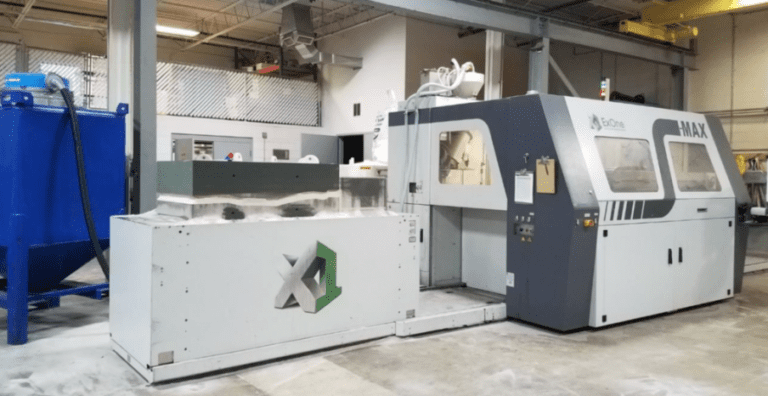[vc_row][vc_column width=”1/3″][vc_single_image image=”2482″ img_size=”full”][/vc_column][vc_column width=”1/3″][/vc_column][vc_column width=”1/3″][/vc_column][/vc_row][vc_row][vc_column][vc_column_text]
“Utilizing 3D printing in this way lays the groundwork for both companies to save time in material, tooling, engineering, inventory, transportation, and startup cost for new projects,” said JB Brown, President of BCI. “The addition of this 3D printer allows BCI to produce cores and molds for low volume work and prototypes without producing expensive and time consuming tooling for customers.”
[/vc_column_text][vc_column_text]ExOne offers multiple 3D printers, including several metal machines, but it stands out for its sand 3D printers, the S series, which consists of the S-Print, the S-Max and the S-Max+. The S-Max 3D printing system is designed for sand casting foundries such as BCI, and allow for the creation of complex sand molds and cores directly from CAD data without the need for a physical pattern. This 3D printer features a large build volume – 1800 x 1000 x 799 mm – and is capable of 3D printing even highly complex cores, lending themselves well to a wide variety of applications.
BCI and Eaton will be able to utilize the new ExOne 3D printer installed in the machine shop to save money and time. 3D printing cores and molds eliminates the need for tooling, which costs money and can take a lot of time to have manufactured. An investment like this one is a wise one for both companies, and is another example of how 3D printing can be used alongside more traditional technologies like CNC machining without eliminating them. While BCI may remain a foundry and CNC machining company at heart, having access to 3D printing technology can help it to bring finished products to its customers faster and for less cost than ever before.[/vc_column_text][vc_video link=”https://youtu.be/UtlQBXC2vsk”][/vc_column][/vc_row][vc_row][vc_column][vc_column_text]
[/ihc-hide-content][/vc_column_text][/vc_column][/vc_row]


